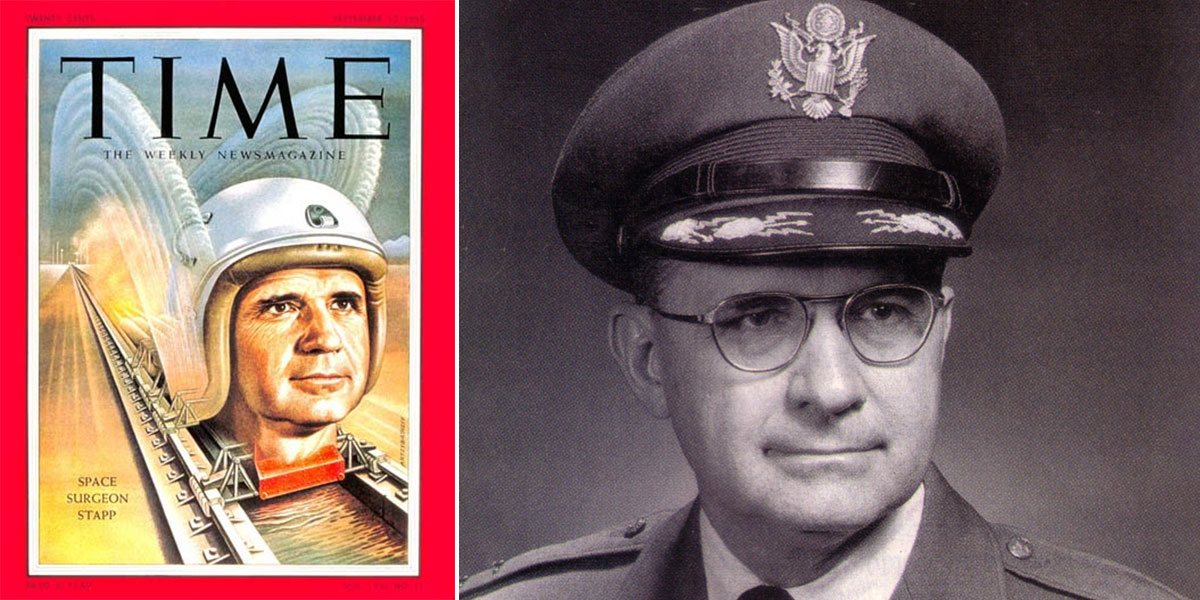How a Baylor Bear became the ‘Fastest Man on Earth’ — and helped make seatbelts common

Zero to 60? That’s kids’ stuff. Try 0 to 632 mph in five seconds — then decelerating back to zero in another 1.4 seconds. Such a ride puts the body through 40+ G’s of force. “My eyeballs pushed against the upper lids, pulling at their attachments with a searing pain like a dental extraction without anesthetic,” recalled the test pilot.
That was the last of 29 rocket sleds Dr. John Paul Stapp (BA ’31, MA ’32) would ride in the mid 1950s, part of U.S. Air Force safety testing that would lead to improved pilot helmets, better seatbelts and shoulder harnesses, improved escape mechanisms, and stronger cockpit frames.
But before all that, Stapp was a Baylor Bear. The eldest son of Baptist missionaries to Brazil, Stapp earned both his bachelor’s and master’s degrees from Baylor. He went on to earn a PhD in biophysics from UT and an MD from Minnesota before beginning his active military career in 1944 as a medical officer.
In 1955, his work on acceleration and deceleration landed him on the cover of TIME magazine, billed as “The Fastest Man on Earth” for his rocket-sled work that set new land-speed records. The goal? Studying the effects of rapid deceleration upon the human body in order to improve the safety of pilots — using himself as a human guinea pig.
After his test piloting days were through, Stapp continued his work on vehicle safety — leading a car-crash study program for the Air Force, and launching the Stapp Car Crash Conference (which continues today) to promote discussion about vehicle design and passenger safety. Two years after Stapp launched his conference, Volvo became the first auto maker to install seatbelts in cars; a decade later, President Lyndon B. Johnson signed into law a measure requiring seatbelts on all new cars sold in the United States.
Stapp retired from the Air Force in 1970 with the rank of colonel. He was celebrated with the USAF Distinguished Services Medal, the National Medal of Technology, an honorary doctorate from Baylor, and induction into the National Aviation Hall of Fame, among a long list of honors, before his passing in 1999.
Sic ’em, Col. Stapp!

